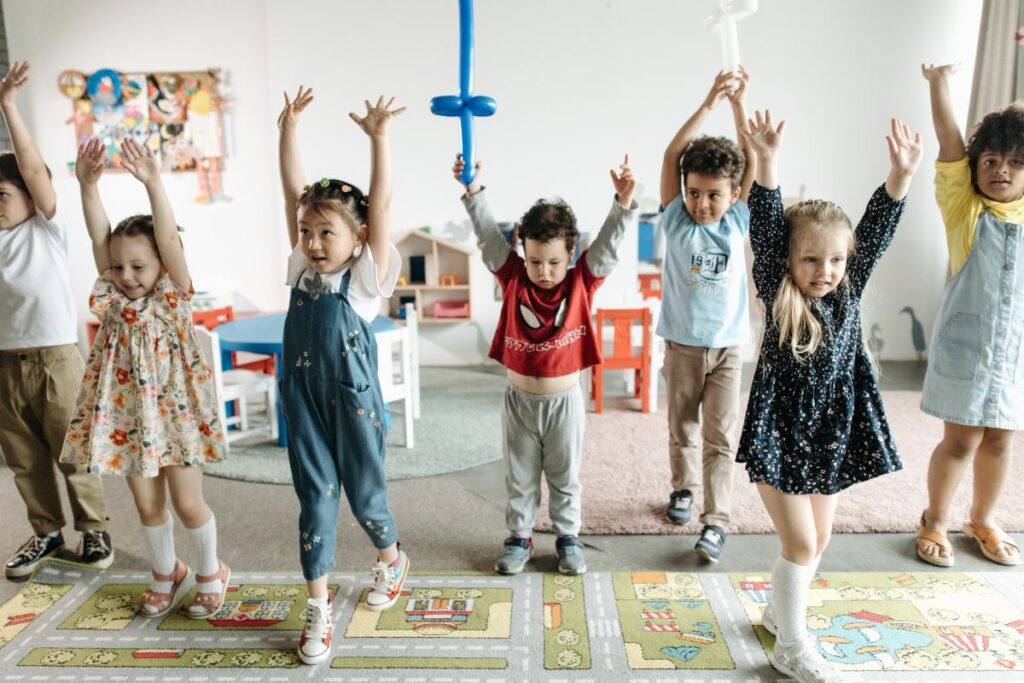Values play such an important role in each of our lives. They are the guideposts from which we make decisions and interact with the world around us. Understanding and empathy are such important values for us to learn when we are young as they help us to create positive relationships within society as we grow. When we are raising children, we play a key role in introducing these values into their life early on. Sometimes it can be overwhelming though as we want to raise children that are kind and empathetic but we might not be sure where to start.
In this blog post, we’ll explore seven tips that could help you raise kind and empathetic kids, and how their kindness could impact not only their own but others’ lives.

- Lead by Example:
Children learn by observing their parents and carers. Show them compassion and empathy in your interactions with others, whether it’s helping a neighbour, comforting a friend, or supporting a family member. Your actions speak louder than words and will serve as a strong foundation for their own behaviour.
Example: When a family friend is going through a tough time, if you are to openly express your concern and offer assistance, maybe taking over a meal or offering to run some errands for them and then communicating this to your child, getting them involved, your child will observe your genuine care and learn the importance of being there for others during difficult times. - Encourage Emotional Expression:
Creating an environment where your children feel comfortable expressing their emotions is important, this helps them understand their feelings and empathise with others.
For example: This could look like asking open-ended questions about their day, feelings, and experiences, and listening actively without judgment. After a long day at school, ask your child how their day went. If they seem upset, encourage them to share their feelings. Validate their emotions by saying, “I understand you had a tough day. Would you like to talk about it?” - Practice Active Listening:
Teach your children the value of truly listening to others. When they engage in conversations, encourage them to maintain eye contact, nod, and ask follow-up questions. By listening attentively, they show respect and consideration for the speaker’s perspective.
For example: During a family dinner, engage in a conversation where everyone takes turns sharing their favourite part of the day. As each person speaks, the rest of the family listens attentively, showing that each person’s feelings and experiences matter. - Teach Kindness Through Actions:
Engage in regular acts of kindness as a family. This could look like volunteering together, reading an educational book, donating to a local not-for-profit, or simply helping someone in need. Involving your children in these activities, while explaining how their actions make a positive impact on others’ lives will help them to see what kindness can bring to a person or community.
For example: If you see someone struggling with a heavy load or having difficulty, offer your assistance. This could be as simple as holding the door for someone with their hands full, helping a classmate carry their books, or assisting an elderly person with their groceries. Your willingness to help can brighten someone’s day and make a tangible difference in their experience. - Discuss Feelings and Reactions:
When there is conflict in your family, use these moments as teaching experiences. Discuss how their actions or words might have affected others and explore alternative ways to handle situations. Encourage your child to consider how others might be feeling and brainstorm solutions together.
For example: If your child gets into an argument with a friend, sit down together and discuss the situation. Ask questions like, “How do you think your friend felt during the argument?” This helps your child consider the emotions of others involved. - Practice Empathy-Building Activities:
Engage in activities that cultivate empathy. For example, have your children imagine how characters in books or movies might be feeling and why. This encourages them to think beyond their own perspective and consider the emotions of others.
For example: While reading a storybook with your child, pause at a critical moment and ask them how they think the main character feels and why. This encourages them to put themselves in someone else’s shoes and consider their emotions.
Some examples of books for this activity are:- “Wonder” by R.J. Palacio:
This bestselling novel follows the story of Auggie Pullman, a young boy with facial differences who enters a mainstream school for the first time. The book delves into Auggie’s experiences as well as those of the people around him, offering different perspectives on empathy, kindness, and understanding. Through Auggie’s challenges and triumphs, readers are encouraged to consider how they would feel in similar situations and to view the world with greater compassion.
- “Each Kindness” by Jacqueline Woodson:
The story in this book revolves around a new girl named Maya who joins a class. The main character, Chloe, initially ignores Maya and misses opportunities to show kindness. The book reflects on the importance of small acts of kindness and the impact of missed opportunities. It encourages children to think about the consequences of their actions and how they can positively affect others’ lives
- “The Invisible Boy” by Trudy Ludwig:
This illustrated book follows Brian, a quiet and overlooked boy in his class. Brian’s isolation and loneliness are highlighted through the illustrations, but his situation changes when a new student, Justin, befriends him. The story provides a valuable lesson in empathy as it explores how a simple act of kindness can make a difference in someone’s life and help them feel seen and valued.
- “The Rabbit Listened” by Cori Doerrfeld:
This heartwarming story follows a young child named Taylor who is dealing with a big emotion. Throughout the book, various animals offer advice on how to handle the situation, but it’s the rabbit who simply listens and provides comfort that helps Taylor the most. The book teaches the importance of being there for someone and understanding their feelings.
- “Be Kind” by Pat Zietlow Miller:
In this story, a young girl named Tanisha spills grape juice on her dress at school. The main character contemplates how to respond and learns that kindness comes in various forms, from sharing a drawing to inviting Tanisha to play. The book explores the different ways children can show empathy and the positive impact it can have on others.
- “The Smallest Girl in the Smallest Grade” by Justin Roberts:
Sally McCabe may be small, but she notices things that others often overlook. When she sees unkind actions happening at school, she decides to speak up and make a difference. This book emphasises the significance of standing up for what’s right and treating others with respect, regardless of their size or status.
These books offer engaging stories that prompt young children to put themselves in the characters’ shoes and consider their emotions and experiences. They are excellent tools for fostering empathy and encouraging thoughtful discussions about understanding others’ feelings.
- “Wonder” by R.J. Palacio:
- Encourage Problem-Solving:
Guide your children in finding constructive solutions to conflicts. Help them understand that showing compassion involves not just understanding emotions but also taking steps to make things better. This could be as simple as apologising for a mistake, taking responsibility for your actions, admitting when you were wrong or finding ways to help someone in need.
For example: If your child accidentally breaks a friend’s toy, guide them through the process of making amends. Encourage them to apologise sincerely and come up with ways to make things right, such as offering to help fix or replace the toy.
Keep in mind that these examples can be adapted to your family’s values and circumstances. The key is to consistently reinforce these behaviours through your own actions and discussions with your child. Over time, they will internalise these values and become naturally compassionate and empathetic individuals.
By instilling the values of compassion from a young age, you are shaping your children to be incredible human beings who make a positive difference in the lives of others.
Remember, every small act of kindness contributes to a more compassionate and harmonious world.





